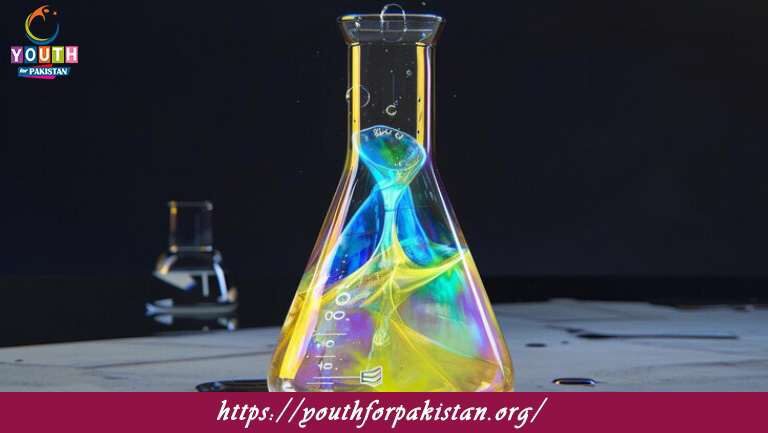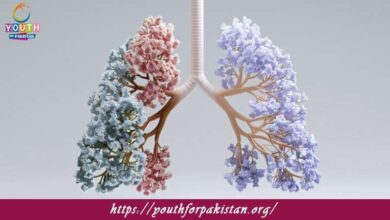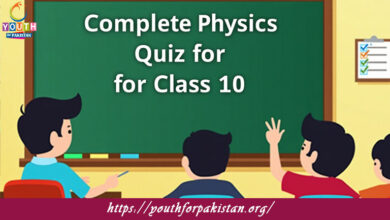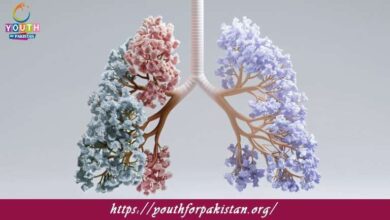10th Class Chemistry Chapter 9 Quiz with Answers

“10th Class Chemistry Chapter 9 Quiz: Chemical Equilibrium” discusses the state of dynamic balance in chemical reactions and the laws governing it. This chapter is very important for MDCAT students because it gives the basis for understanding reversible reactions, reaction rates, and factors affecting equilibrium—the most important area that can be tested in competitive exams. Our MDCAT Quiz for this chapter provides a strong platform to practice these concepts effectively.
The chapter introduces the student to chemical equilibrium, bringing forth the concept of reversible reactions where the rate of the forward reaction equals the rate of the reverse reaction. Students will learn about the Law of Mass Action and how it is used in obtaining the equilibrium constant (Kc), which is a measure of the position of equilibrium. The chapter discusses factors that disturb equilibria, such as temperature, pressure, and concentration, in relation to Le Chatelier’s Principle, which predicts the response of systems to disturbances. Also included is the role of catalysts in equilibrium and the distinction between homogeneous and heterogeneous equilibria. The chapter provides examples of the industrial applications of chemical equilibrium, including the Haber process for the production of ammonia.
MDCAT Quiz: Master Chemical Equilibrium Concepts
Our MDCAT Quiz for Chapter 9 includes questions on equilibrium constants, reaction rates, and the application of Le Chatelier’s Principle. The quiz challenges students to analyze reactions, predict equilibrium shifts, and calculate equilibrium concentrations. Regular practice will ensure a solid understanding of chemical equilibrium, an essential topic for the MDCAT exam.
- Test Name: 10th Class Chemistry Chapter 9 Quiz
- Type: Quiz Test
- Total Questions: 30
- Total Marks: 30
- Time: 30 minutes
Note: Answer of the questions will change randomly each time you start the test, once you are finished, click the View Results button.
Free Flashcards for Chemical Equilibrium
Boost your learning with free flashcards for Chapter 9. These flashcards include key terms like equilibrium constant (Kc), Le Chatelier’s Principle, reversible reactions, and reaction rates. Flashcards are a fast and efficient way to review and memorize the critical concepts and formulas that you need to know in order to succeed on MDCAT.

The equilibrium constant (𝐾𝑐Kc) for a reaction at a certain temperature is 1.5. What does this indicate about the reaction?

In the equation: 2𝐻2(𝑔)+𝑂2(𝑔)⇌2𝐻2𝑂(𝑔)2H2(g)+O2(g)⇌2H2O(g), if the pressure of 𝐻2H2 is increased, the equilibrium will shift _______.

If the concentration of a product is increased at equilibrium, the equilibrium will shift _______ to counteract the change.

For the reaction: 2𝑆𝑂2(𝑔)+𝑂2(𝑔)⇌2𝑆𝑂3(𝑔)2SO2(g)+O2(g)⇌2SO3(g), if the concentration of 𝑆𝑂3SO3 is decreased, the equilibrium will shift _______.

What effect does adding an inert gas to a reaction mixture at constant volume have on the equilibrium?

For the reaction: 2𝑁𝑂2(𝑔)⇌𝑁2𝑂4(𝑔)2NO2(g)⇌N2O4(g), if the concentration of 𝑁2𝑂4N2O4 is increased, the equilibrium will shift _______.

If the concentration of a reactant is decreased at equilibrium, the equilibrium will shift _______ to counteract the change.

Which of the following factors affects only the rate of reaction and not the position of equilibrium?

The equilibrium constant (𝐾𝑐Kc) for the reaction: 𝐴+𝐵⇌𝐶+𝐷A+B⇌C+D is 25. What does this indicate about the reaction at equilibrium?

In a reaction at equilibrium, the rate of the forward reaction is _______ the rate of the reverse reaction.
Experience the real exam environment with our expertly designed collection of over 25,000 MCQs MDCAT Mock Tests.





